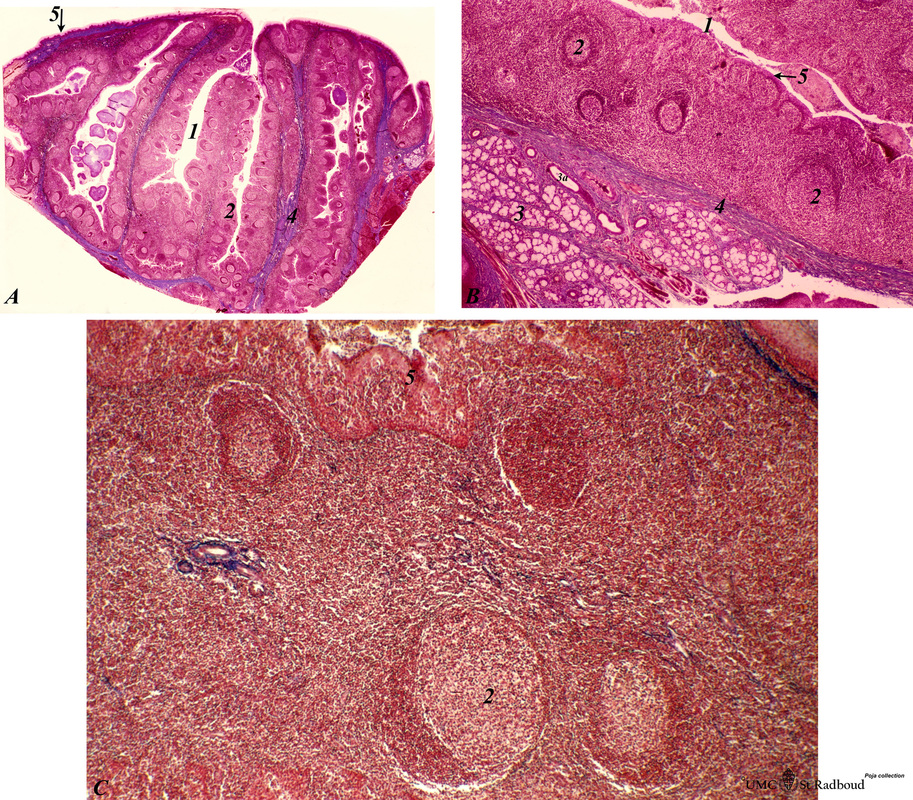2.4 POJA-L1069+1070+1071
Title: Survey and details of Palatine tonsil (‘lymphoepithelial tissues’, gut-associated lymphatic tissue, GALT) (human)
Description: Stain: Azan.
The survey in (A) shows that the palatine tonsil consists of crypts (1) and folds of the surface epithelium (stratified squamous) surrounded by accumulation of lymphoid cells organized in follicles (2), localized in the lateral wall of the oropharynx. (3) (B): The lining epithelium (5) is separated from the oral salivary glands (3) including ducts (3a) by strong connective tissue layers (4) (stained blue). (C) The epithelium can be heavily infiltrated by lymphocytes causing an incomplete basal lamina and desquamation (5). Tonsils do not have afferent lymph vessels, but efferent vessels are present (not visible at this enlargement).
Keywords/Mesh: lymphatic tissue, palatine tonsil, histology, POJA collection
Title: Survey and details of Palatine tonsil (‘lymphoepithelial tissues’, gut-associated lymphatic tissue, GALT) (human)
Description: Stain: Azan.
The survey in (A) shows that the palatine tonsil consists of crypts (1) and folds of the surface epithelium (stratified squamous) surrounded by accumulation of lymphoid cells organized in follicles (2), localized in the lateral wall of the oropharynx. (3) (B): The lining epithelium (5) is separated from the oral salivary glands (3) including ducts (3a) by strong connective tissue layers (4) (stained blue). (C) The epithelium can be heavily infiltrated by lymphocytes causing an incomplete basal lamina and desquamation (5). Tonsils do not have afferent lymph vessels, but efferent vessels are present (not visible at this enlargement).
Keywords/Mesh: lymphatic tissue, palatine tonsil, histology, POJA collection

